Hammad is a documentary photographer, based between Boston and Ramallah, West Bank. Hammad also works as a human rights researcher and campaigner.
I traveled from the U.S. to the West Bank on Oct. 2 to visit my Teta, my maternal grandmother, for a week. Instead, I stayed for one month to document my people's fight for freedom, and witness their pain.
Reflecting on my time, in arguably the “safest” part of the West Bank, 50 miles from the Gaza Strip, torments me. As Amnesty International has documented, Palestinians—whether in the West Bank, Gaza, or Israel, are subjected to the same system of apartheid. Still, it can feel insincere: Ramallah, the occupied city I reside in, is just one drop compared to the ocean of erasure taking place right now in Gaza.
However, my elders always remind me that we are one. Though I am as old as the first Oslo Accord—which now lingers as an emblem for failed Palestinian statehood and peace—I resist envisioning freedom in fragmentation.

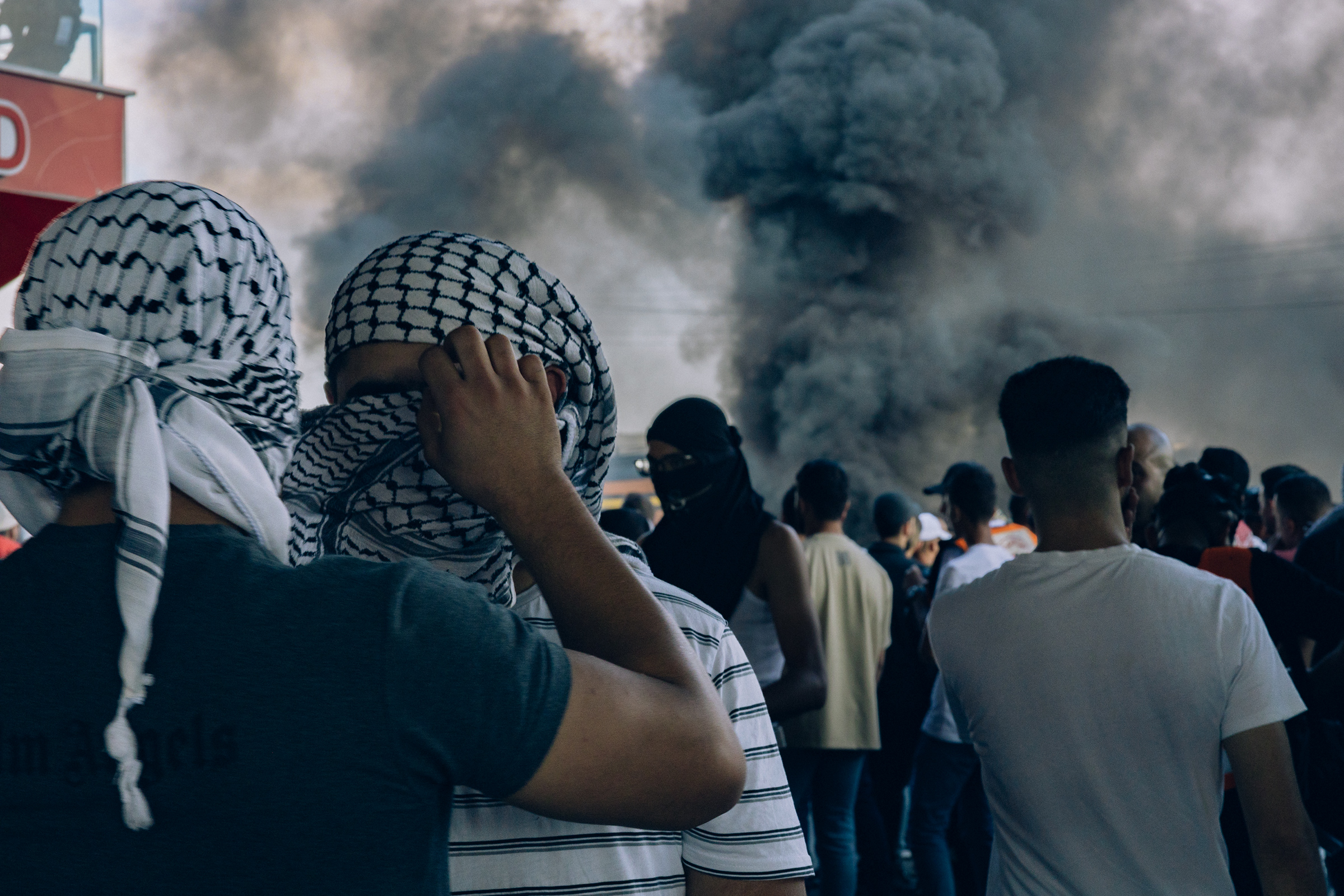
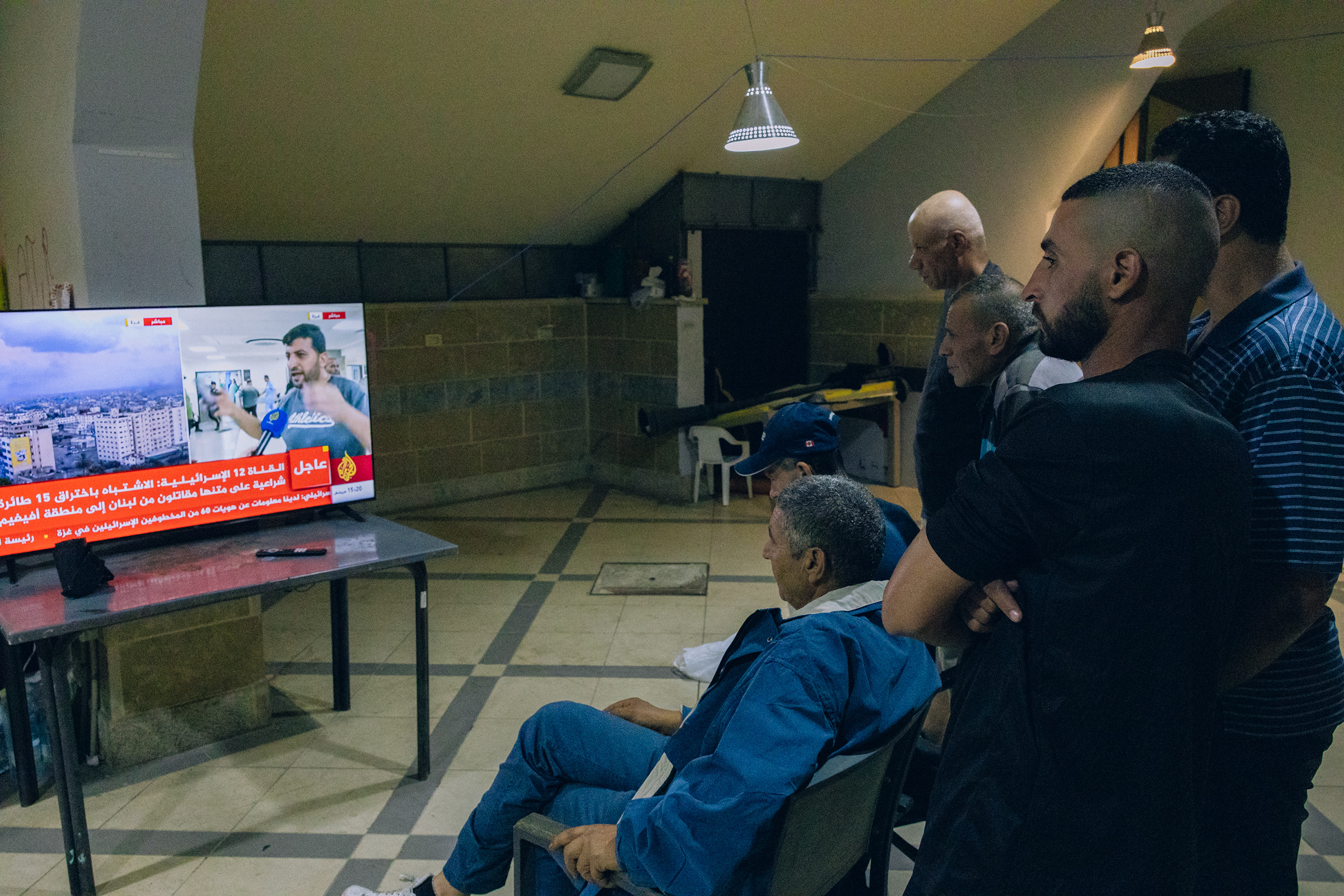
My photographs are what I witnessed in the 5 square miles around me in the West Bank, over the span of just three weeks, beginning two days after the Oct. 7 attack on Israel. Unlawful killings of teenagers, collective punishment, and genocidal violence in my own backyard.
On Oct. 8, I entered Qalandia refugee camp to have dinner with my paternal family. One hour after we washed the dishes, news broke that Yasser al-Kasba, 17, had been shot and killed near the Qalandia checkpoint by an Israeli sniper while his back was turned.
On Oct. 12, I visited the Sarriyeh sports club, where there were upwards of 400 Palestinian workers from Gaza who were stranded in Israel after Oct. 7. One man received news that three of his family members were killed by an Israeli airstrike. “What about the others?” he screamed to his relative on the phone in Gaza. “We are still picking up the rubble,” he replied.

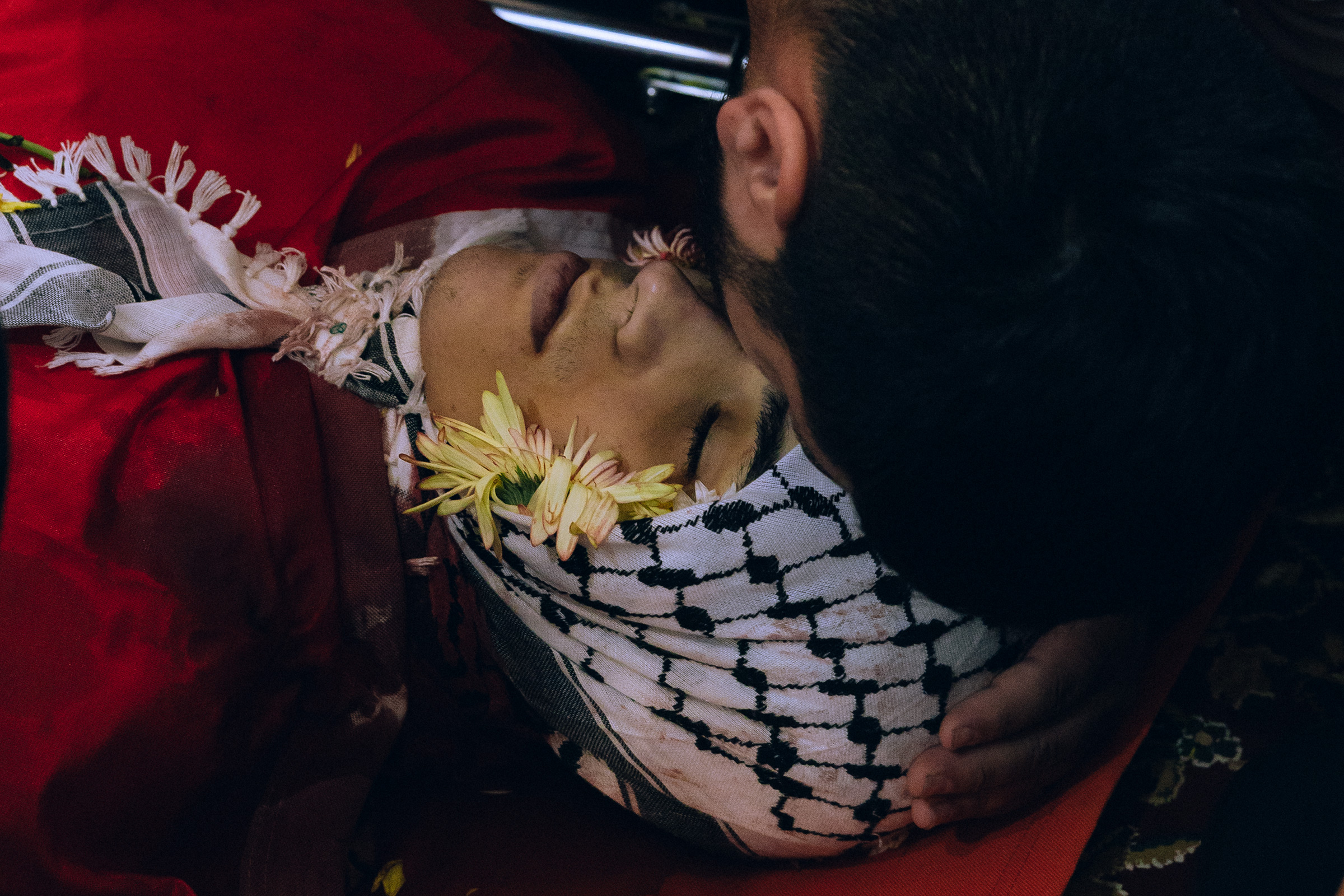
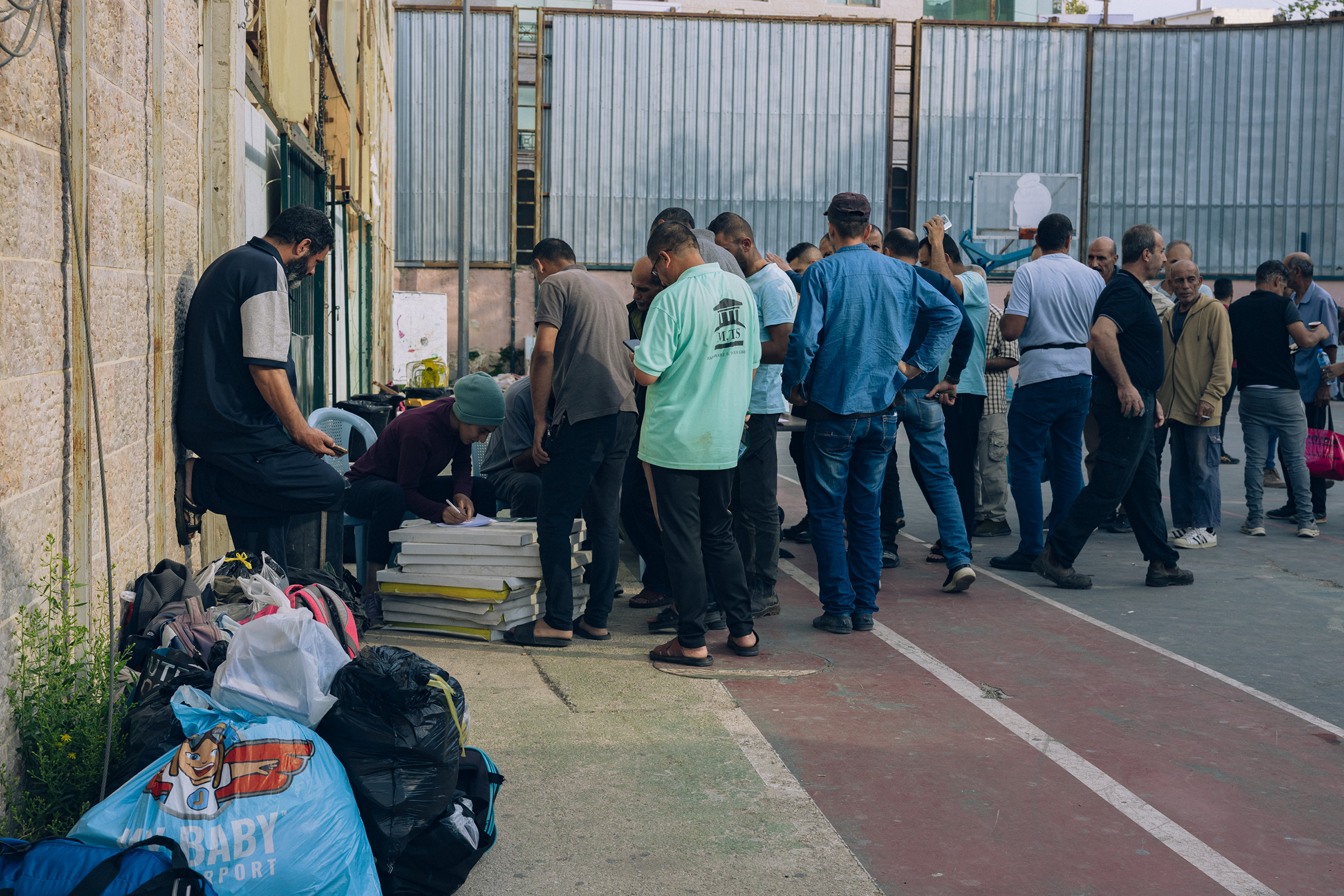
Days later, when I went to the Redanna sports club, chants from dozens of other Palestinian workers from Gaza could be heard: “We declare from Gaza: uprising and victory.” A protest by Palestinian refugees, inside a refuge, within occupied lands.
A 60-year-old worker told me: “I just want to hear the voice of my grandchildren. You think we are happy here? We don’t want food or water, we want to go back to Gaza. We would die for our land.”
A friend and photographer from Gaza, Majd Arandas, texted me to ask if I could check on his brother-in-law, who was one of the workers taking refuge in Ramallah.
On Oct. 25, tear gas and rifle fire woke me up while in Qalandia refugee camp. I closed the windows of our home as my 6-year-old cousin had done during the previous raid. I woke up an hour later to the mosque’s speakers. The imam was not making the morning call to prayer, but announcing another death, Ahmad Mutair—a high-school student and fourth-generation refugee was shot and killed by Israeli forces. The Israeli government has not issued a public statement on Mutair or al-Kasba.
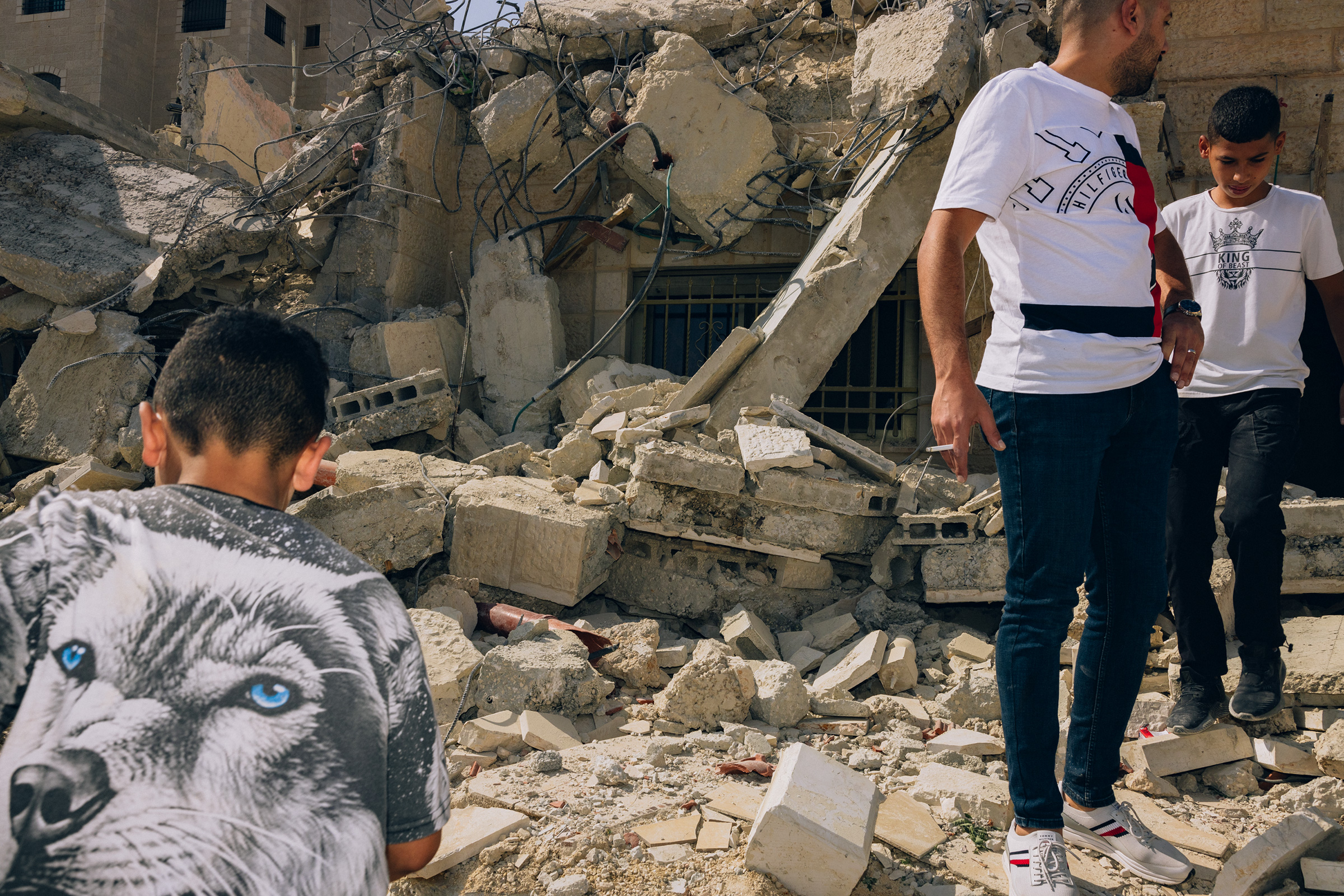



On Oct. 28, I walked into the aftermath of a home demolition in the Jalazon refugee camp, hours after dozens of Israeli soldiers raided the camp alongside a bulldozer. Six Palestinian families and three generations of refugees lost their homes at sunrise. Their bread for the morning was still laid out on their dining room table. Israel’s punitive home demolitions are a form of unlawful collective punishment and a grave breach of the Fourth Geneva Convention.
On Nov. 1, I returned to the U.S. for a few weeks to be with my partner. While on the plane, I could not bear to look out of the window. I felt nauseous sharing the same view as the drones, Apache helicopters, and F-16 jets; my tax dollars bombing Gaza.
I connected to the wifi in the plane and received a message about my photographer friend.
“Majd was killed.” His neighborhood was hit by an Israeli airstrike.
Hammad is a documentary photographer, based between Boston and Ramallah, West Bank. Hammad also works as a human rights researcher and campaigner.
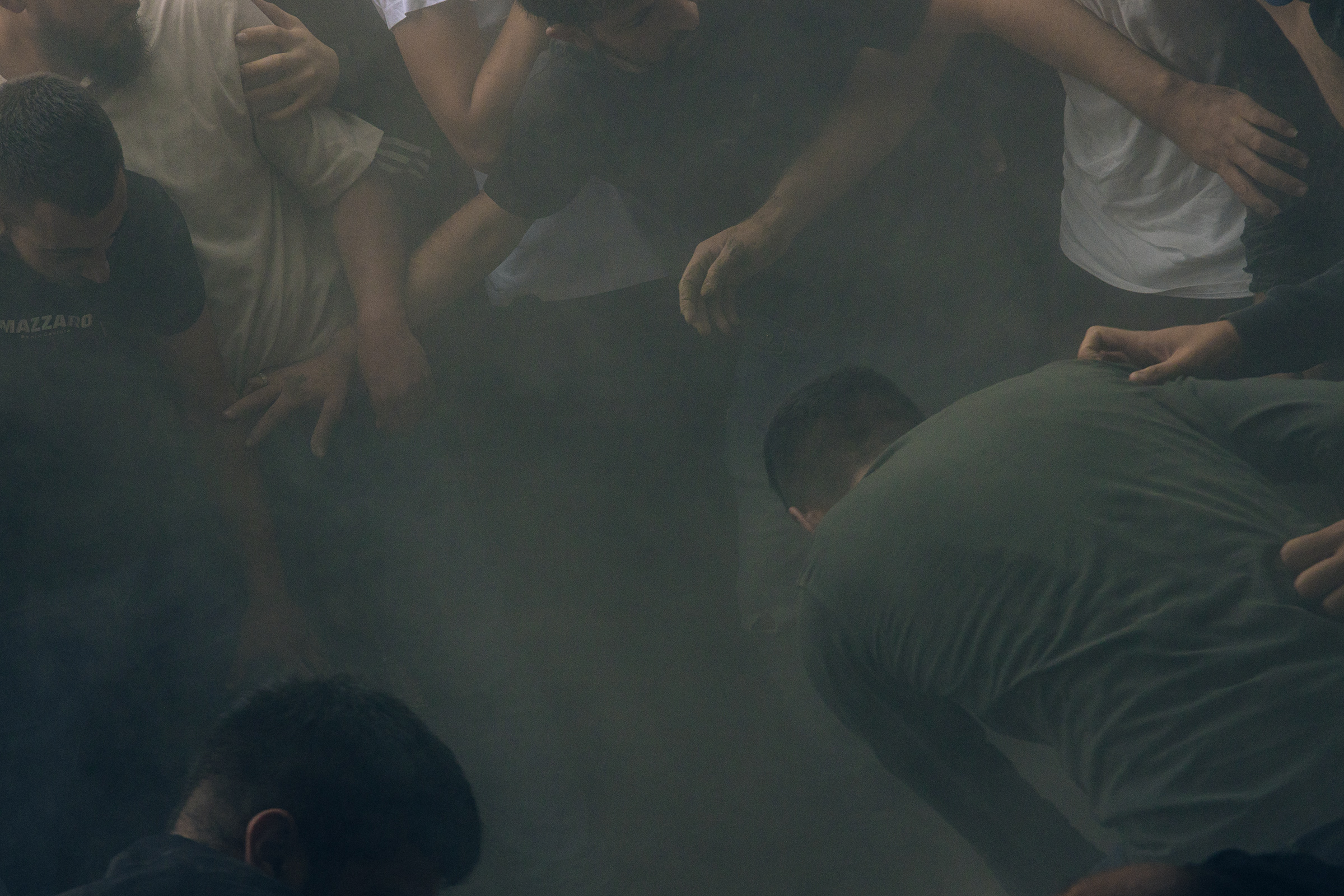
More Must-Reads from TIME
- Introducing the 2024 TIME100 Next
- The Reinvention of J.D. Vance
- How to Survive Election Season Without Losing Your Mind
- Welcome to the Golden Age of Scams
- Did the Pandemic Break Our Brains?
- The Many Lives of Jack Antonoff
- 33 True Crime Documentaries That Shaped the Genre
- Why Gut Health Issues Are More Common in Women
Contact us at letters@time.com
